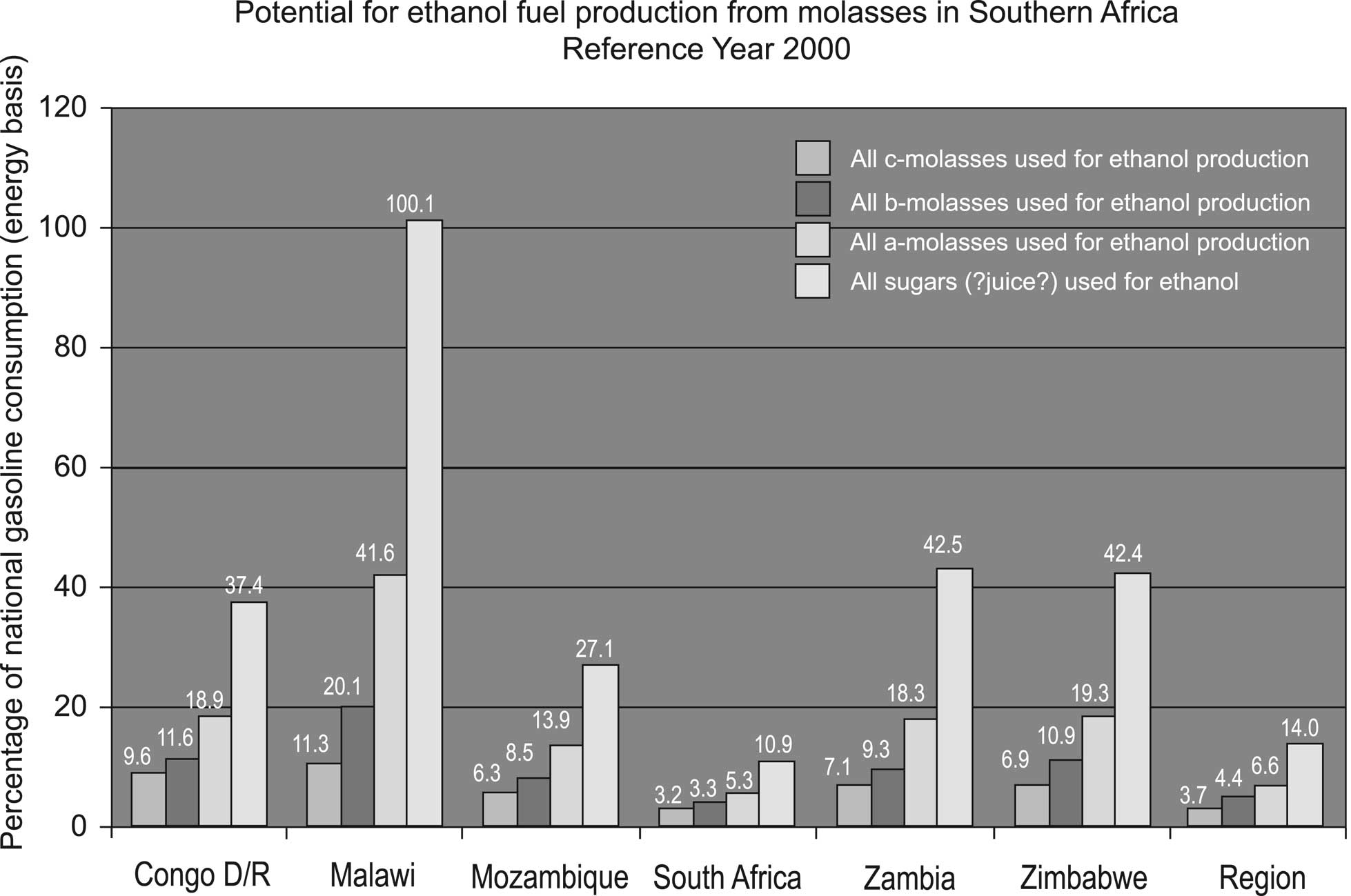
Figure 4-1. Potential for ethanol fuel production from molasses in southern Africa. Source: Based on CARENSA
scenarios, Woods et al., 2005.
| Previous | Return to table of contents | Search Reports | Next |
| « Back to weltagrarbericht.de | ||
Food Systems and Agricultural Products and Services towards 2050 | 87

Figure 4-1. Potential for ethanol fuel production from molasses in southern Africa. Source: Based on CARENSA
scenarios, Woods et al., 2005.
not currently suitable for crop production and would require
large investments in irrigation and other infrastructure
before it could produce crops. In addition to these economic
barriers, a large-scale expansion of agricultural production
for biofuels would also encounter environmental limits in
the form of water availability and threats to natural vegetation
and forests (Berndes et al., 2003). Climate change will
also affect these factors in the envisioned timeframe. Finally,
increasing the demand for biomass for biofuels production
could have considerable impact on food prices—threatening
food security for many poor net buyers of food. Agricultural energy requirements and consumption. It is highly likely that towards 2050 many countries in sub- Saharan Africa will continue to have some of the lowest per capita energy consumption levels in the world. The projected increase in yields and production in agriculture as a result of energy inputs can lead to important social and environmental gains. Agro-industrial growth will in itself increase energy requirements (Smeets et al., 2007). An assessment of the region’s future agricultural energy demand and supply is complex due to unique social and political elements as well as concerns for the food security of millions of people. The past and present energy situation in Africa’s agricultural sector has been analyzed systematically, showing that agricultural productivity in sub-Saharan Africa will continue to be closely associated with direct and indirect energy inputs, and there will be continued need for policies to consolidate this relationship for the benefit of |
farmers and agroecosystems in the region (FAO, 2006a). However, for this to materialize there will be a need, unlike in the past decades, to design and implement agricultural development and extension plans that pay due regard to this synergy. The Comprehensive African Agricultural Development Program (CAADP) of the NEPAD is poised to drive the region’s agriculture and foods systems toward this goal (NEPAD, 2004). The future relationship between agriculture and energy
will largely be shaped by direct and indirect drivers of changing
farming systems and patterns (traditional vs. mechanized
vs. irrigated) that will alter energy efficiency and production
characteristics. The changes in the agricultural yield that will
come with an increase in energy and chemical as well as
changes in agricultural and post harvest processing technologies
like crop curing, drying and processing will also
play part. An IFPRI-sponsored assessment concludes that
although many questions remain unresolved, there will
continue to be synergy between bioenergy, development
and agricultural sustainability in SSA (Hazell and Pachauri,
2006). The IMPACT model (Rosegrant et al., 2002) presents
scenarios for biofuels that offer understanding for
biofuel growth and productivity specific to SSA. The particular
challenge will be reconciling food and fuel demand
tradeoffs. In the absence of a solution to this tradeoff, the
use of cassava and other agricultural crops as bioenergy
feedstock is highly likely to raise agricultural prices leading
to sizeable welfare losses—especially for the poorest strata |
| Previous | Return to table of contents | Search Reports | Next |
| « Back to weltagrarbericht.de | ||